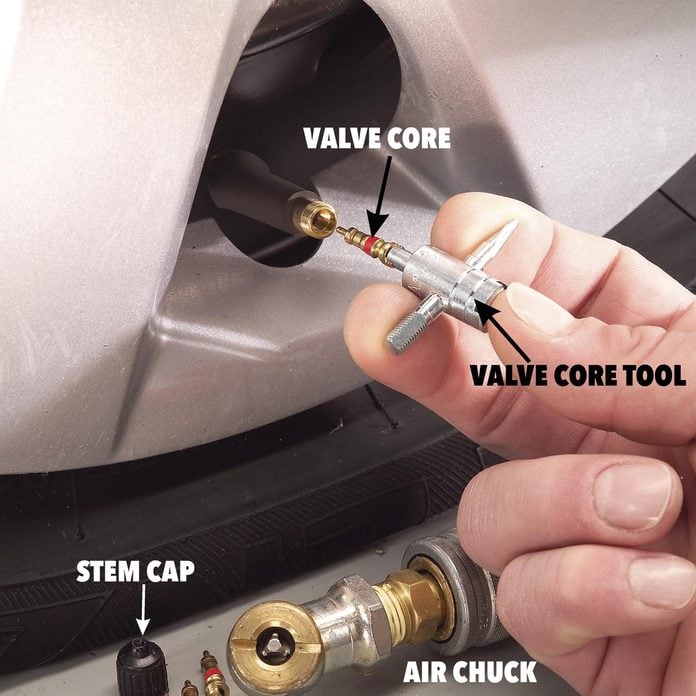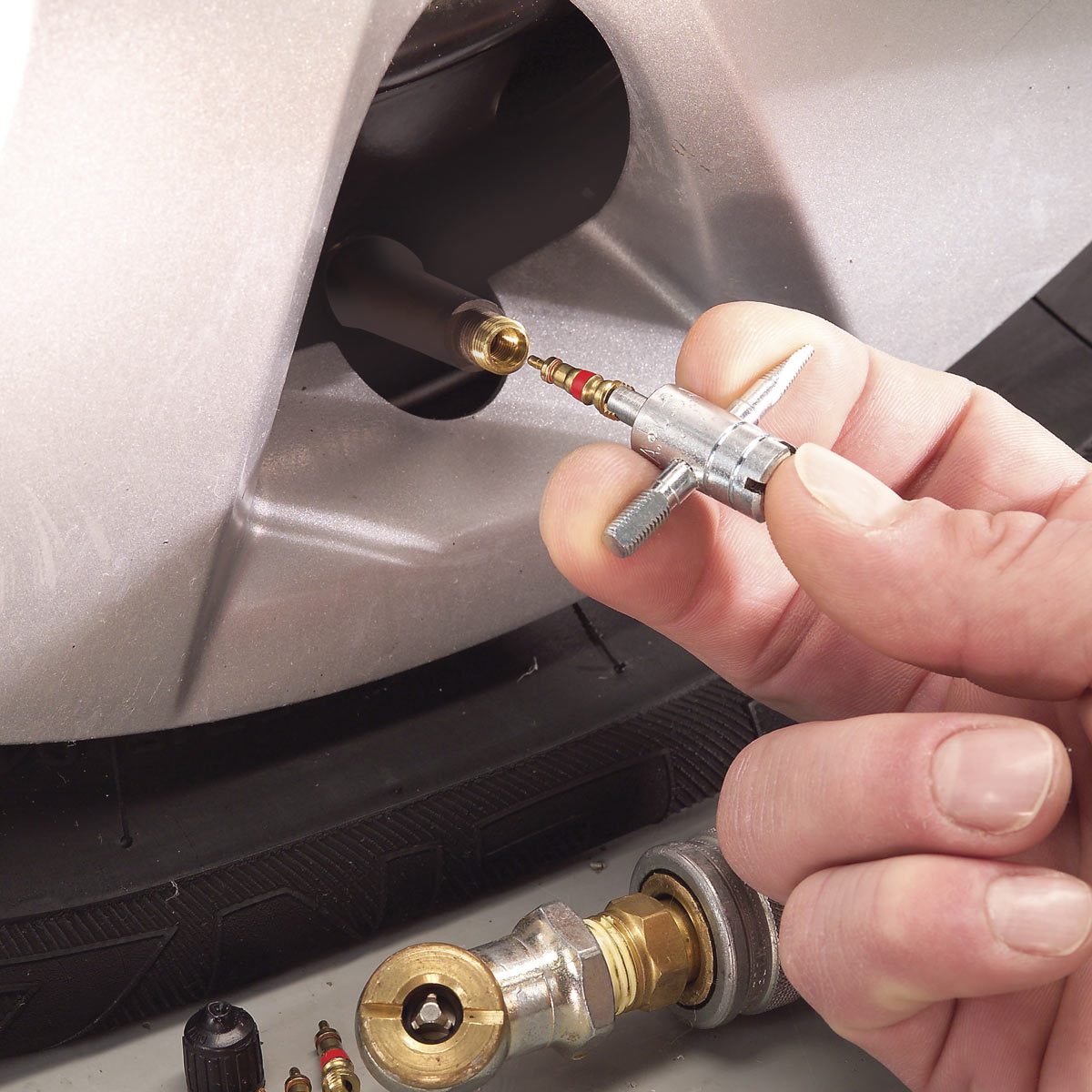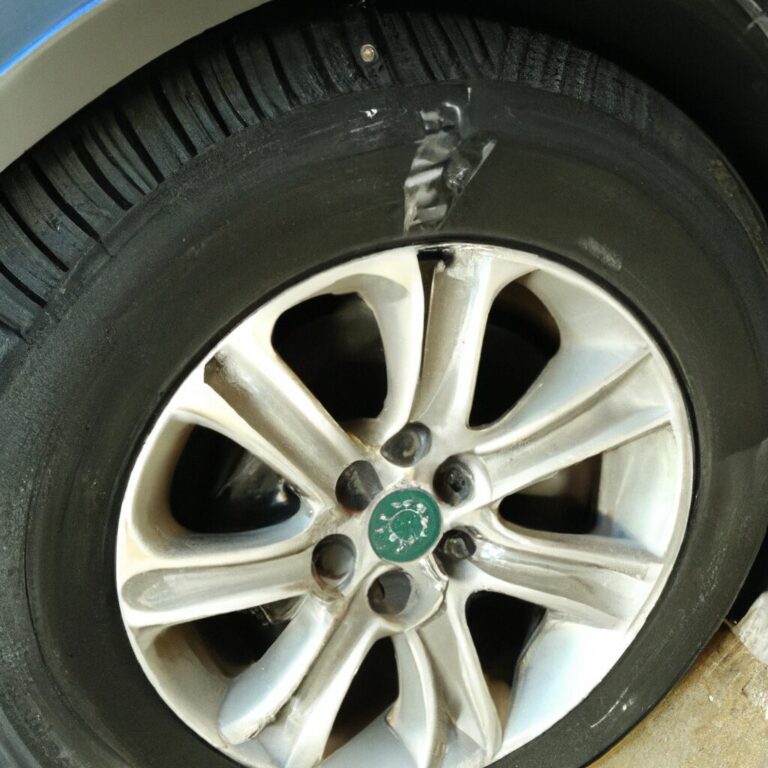How to Fix a Valve Stem Leak
To fix a valve stem leak, locate the leaking valve stem, remove the tire, replace the valve stem, and re-inflate the tire to the recommended pressure. Fixing a valve stem leak is a straightforward process that can prevent further tire damage and maintain optimal tire pressure.
The valve stem is a crucial component of a tire, ensuring proper inflation and preventing leaks. By promptly addressing a valve stem leak, you can avoid potential flat tires and maintain safe driving conditions. We will discuss the steps to fix a valve stem leak effectively and provide useful tips for preventing future leaks.

Credit: www.familyhandyman.com
Identifying A Valve Stem Leak
Identifying a valve stem leak is crucial in maintaining the optimal performance of your vehicle’s tires. A valve stem leak can lead to reduced tire pressure, affecting your vehicle’s handling and fuel efficiency. Here are the key methods to detect a valve stem leak and take appropriate action to fix it.
Visual Inspection
Visual inspection is the first step in identifying a valve stem leak. Look for visible cracks, cuts, or damage on the valve stem or around the valve cap. Check for any signs of rust or corrosion, which can indicate a leak at the valve stem. Inspect for any debris or foreign objects that may be causing the leak. Make sure the valve cap is present and in good condition to prevent air from escaping.
Listening For Air Leaks
Listen for any hissing sound near the valve stem, which is a clear sign of a leak. Use a spray bottle with soapy water to spray the valve stem and valve area. Look for bubbles forming, indicating air escaping from the valve stem. This method helps in pinpointing the exact location of the leak and confirms if the valve stem is the source of the issue.

Credit: diy.stackexchange.com
Tools And Materials Needed
Fixing a valve stem leak requires the right tools and materials for a successful repair.
Valve Stem Tool
A valve stem tool is essential for safely removing the valve core for inspection and repair.
Replacement Valve Stem
Having a replacement valve stem on hand allows for a quick swap if the existing valve stem is damaged or worn-out.
Tire Pressure Gauge
A tire pressure gauge helps in accurately measuring the tire pressure before and after the repair process.
Soapy Water
Soapy water is a handy tool for locating leaks, as it creates bubbles when applied to the valve stem area.
Removing The Faulty Valve Stem
When it comes to fixing a valve stem leak, it is crucial to first remove the faulty valve stem properly. This process involves deflating the tire, loosening the valve core, and ultimately removing the valve stem.
Deflating The Tire
BoldBefore removing the valve stem, deflate the tire fully using a tire pressure gauge.
Loosening The Valve Core
Use a valve core removal tool to boldloosen the valve core from the valve stem.
Removing The Valve Stem
With the valve core out, use a valve stem removal tool to boldremove the valve stem from the tire.
Installing A New Valve Stem
When it comes to fixing a valve stem leak, one crucial step is installing a new valve stem. This process enables the proper functioning of the valve and prevents any further leakage. In this section, we will outline the steps to effectively install a new valve stem to address the issue and ensure a reliable and airtight seal.
Preparing The New Valve Stem
Before beginning the installation process, gather the necessary tools and materials including a new valve stem, valve core tool, valve stem puller, and lubricant. Ensure that the new valve stem matches the specifications of your tire and rim. Clean the valve stem hole using a wire brush to remove any debris or dirt that can affect the seal.
Inserting The Valve Stem
With the valve stem prepared, carefully insert it into the valve stem hole, making sure it is placed straight and fully seated against the rim. Apply a small amount of lubricant to the base of the valve stem to facilitate a smooth installation. Use a valve stem puller to firmly secure the valve stem in place, ensuring it is snug and properly seated.
Tightening The Valve Core
Lastly, using a valve core tool, tighten the valve core to the recommended torque specification to ensure a secure and airtight seal. Be cautious not to over-tighten the core, as it can lead to damage or deformation. Once the valve core is tightened, recheck the seal and inflate the tire to the recommended pressure to confirm that the new valve stem has effectively resolved the leak.
Testing For Leaks And Re-inflating The Tire
To fix a valve stem leak, start by testing for leaks and then re-inflating the tire. This process helps detect any issues and ensures the tire is properly inflated.
Inflating The Tire
Once you have identified the valve stem as the source of the leak, the next step is to fix it. Before doing that, it’s essential to make sure the tire is properly inflated. Start by attaching an air compressor or a tire inflator to the valve stem.
It’s important to note that the tire should be cold before inflating it. If you have been driving recently, give it some time to cool down. Additionally, check the manufacturer’s recommended tire pressure, which can usually be found on a sticker inside the driver’s door or in the owner’s manual.
With the air compressor or tire inflator ready, slowly add air to the tire while keeping an eye on the pressure gauge. Be cautious not to overinflate the tire, as this can lead to other issues. Inflate the tire in short bursts, checking the pressure frequently until it reaches the recommended level.
Applying Soapy Water
After inflating the tire, the next step is to check for any remaining leaks. To do this, you will need a solution of soapy water. Prepare the solution by mixing a few drops of dish soap with water in a spray bottle.
Spray the soapy water onto the valve stem, making sure to cover the entire area. It’s worth mentioning that the soapy water acts as a surfactant and helps to identify any escaping air by creating visible bubbles.
It’s important to mention that you should not spray the soapy water directly into the valve stem, as this could introduce moisture and cause corrosion. Instead, spray it around the base of the valve stem and the valve cap.
Checking For Bubbles
After applying the soapy water, carefully observe the valve stem for any bubbles. Bubbles indicate the presence of a leak, and their location will help you determine the exact point of the leak.
If you notice any bubbles forming around the valve stem or valve cap, it’s a clear indication that there is still a leak. In this case, you will need to tighten the valve cap or replace the valve stem altogether.
On the other hand, if no bubbles are visible, it’s a good sign that the leak has been successfully fixed. However, it is recommended to monitor the tire’s pressure over the next few days to ensure the leak does not reoccur.

Credit: www.familyhandyman.com
Frequently Asked Questions Of How To Fix A Valve Stem Leak
Can A Leaking Tire Valve Stem Be Repaired?
Yes, a leaking tire valve stem can be repaired by replacing the valve stem. It’s a simple and cost-effective fix that can be performed by a professional mechanic. Regularly checking for leaks and addressing them promptly is essential for safe driving.
How Do You Stop A Valve Stem Seal From Leaking?
Prevent valve stem seal leaks by replacing the seal with a new one. Proper installation is essential for addressing leaks effectively.
Can You Replace A Valve Stem Without Removing Tire?
Yes, you can replace a valve stem without removing the tire. It’s a quick and simple process that can be done efficiently by professionals.
How Much Does It Cost To Fix A Leaking Valve Stem?
Repairing a leaking valve stem can cost between $20 to $200, depending on the severity of the issue and the vehicle type. Costs may vary based on labor and parts needed for the repair.
How Do You Know If Your Valve Stem Is Leaking?
You can check for a valve stem leak by looking for constant decrease in tire pressure.
What Causes A Valve Stem To Leak?
A valve stem can leak due to aging, corrosion, damage, or improper installation.
Can You Fix A Valve Stem Leak Yourself?
Yes, you can fix a valve stem leak yourself by replacing the valve stem or using a valve stem sealant.
Conclusion
Fixing a valve stem leak is a manageable task with the right tools and knowledge. Regular maintenance and addressing issues promptly can prevent bigger problems down the line. By following the steps outlined in this guide, you can ensure your valve stem is functioning properly and extend the life of your tires.
Watch out for signs of a leak and take action early to keep your vehicle safe and efficient.

